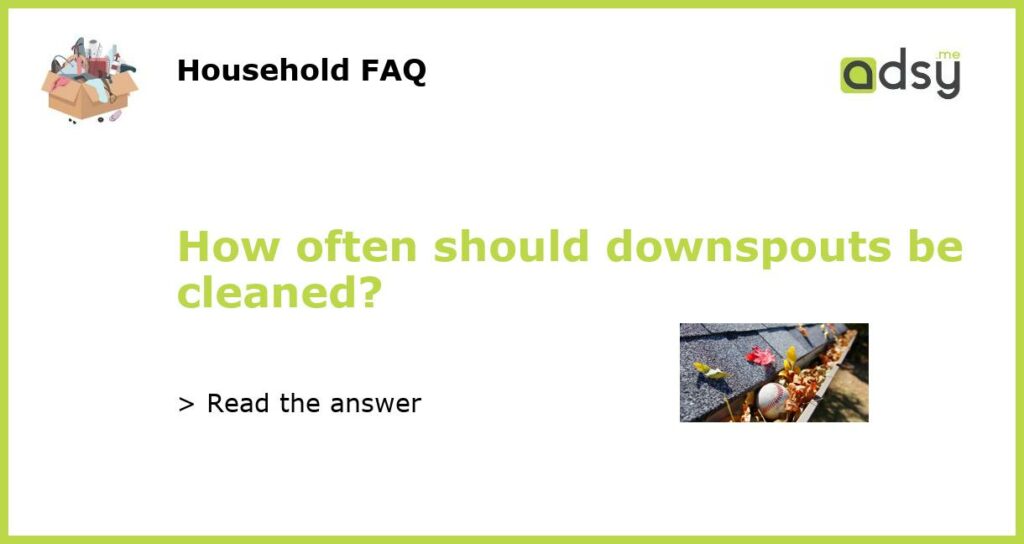Understanding the Importance of Downspout Cleaning
After a heavy rain, have you ever noticed water pouring out of your gutters or overflowing from your downspouts? This is a sign that your downspouts are clogged and in need of cleaning. But how often should you clean them? Let’s dive into the importance of downspout cleaning and the recommended frequency.
1. What are Downspouts?
Downspouts are vertical pipes that collect the water from your gutters and direct it away from your home’s foundation. They play a crucial role in preventing water damage, such as basement flooding or erosion around your home. Without proper maintenance, downspouts can become clogged with leaves, twigs, debris, or even bird nests, hindering water flow and causing potential problems.
2. The Importance of Downspout Cleaning
Regular downspout cleaning is essential for the proper functioning of your gutter system. When downspouts are clogged, water accumulates in the gutters and has nowhere to go. This can lead to overflowing gutters, which can damage your roof, fascia, and soffit. Additionally, water may seep into your home’s foundation, causing cracks, mold growth, and other structural issues. By keeping your downspouts clean, you can avoid these costly repairs and protect the integrity of your home.
3. Recommended Frequency for Downspout Cleaning
The frequency at which you should clean your downspouts largely depends on the environment in which you live. If you have many trees around your property, leaves and debris can quickly accumulate in your gutters and downspouts. In this case, it is recommended to clean your downspouts at least twice a year – once in the spring and once in the fall. These cleanings will remove any accumulated debris and ensure that your downspouts are clear for the rainy seasons.
If you live in an area with fewer trees or have gutter guards installed, you may be able to extend the cleaning interval to once a year. However, it’s important to monitor the water flow from your downspouts regularly. If you notice water overflowing or signs of blockage, it’s time to clean your downspouts immediately.
4. Signs of Clogged Downspouts
Knowing the signs of clogged downspouts can help you determine when it’s time for cleaning. Here are some common indicators of a clogged downspout:
– Overflowing gutters: Water spills over the edges and drips down the sides.
– Water pooling near the foundation: Instead of being directed away, water collects around your home’s foundation.
– Mold or mildew growth: Excessive moisture caused by clogged downspouts can lead to mold and mildew growth.
– Sagging gutters: The weight of accumulated debris can cause the gutters to pull away from the fascia, creating sagging sections.
5. DIY or Professional Cleaning?
You may wonder whether you should clean your downspouts yourself or hire a professional. If you’re comfortable working at heights and have the necessary equipment, you can attempt to clean your downspouts yourself. However, it’s important to take safety precautions and never lean your ladder against the gutters, as this can cause damage.
On the other hand, hiring a professional gutter cleaning service can save you time and ensure a thorough cleaning. Professionals have the experience, specialized tools, and knowledge to clean your downspouts and gutters safely. They can also inspect your gutter system for any potential issues and make necessary repairs.
In conclusion, downspout cleaning is an essential maintenance task to keep your gutters and home protected from water damage. The frequency of cleaning depends on the amount of debris in your gutters, but a general rule of thumb is to clean them at least twice a year. Regular cleaning, either DIY or professional, will help maintain the integrity of your gutter system and prevent costly repairs in the long run.

